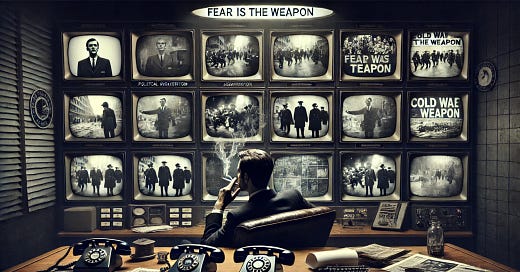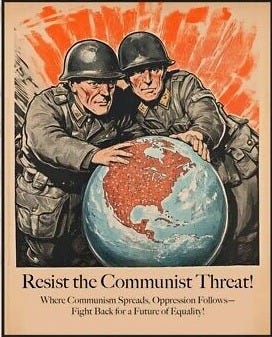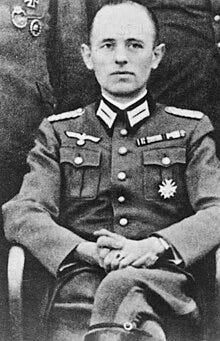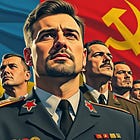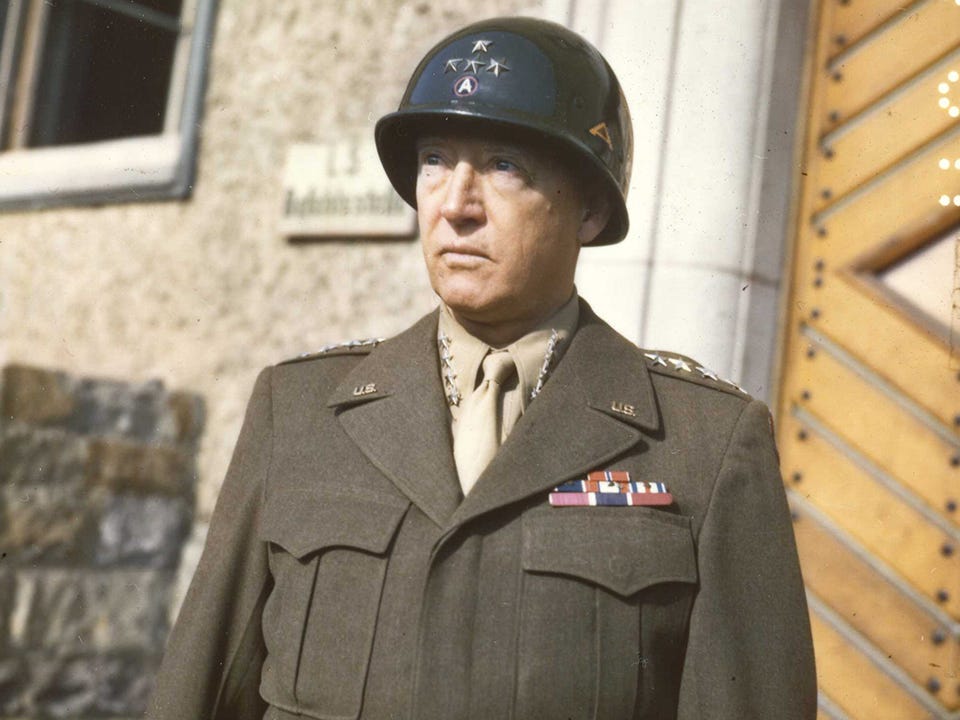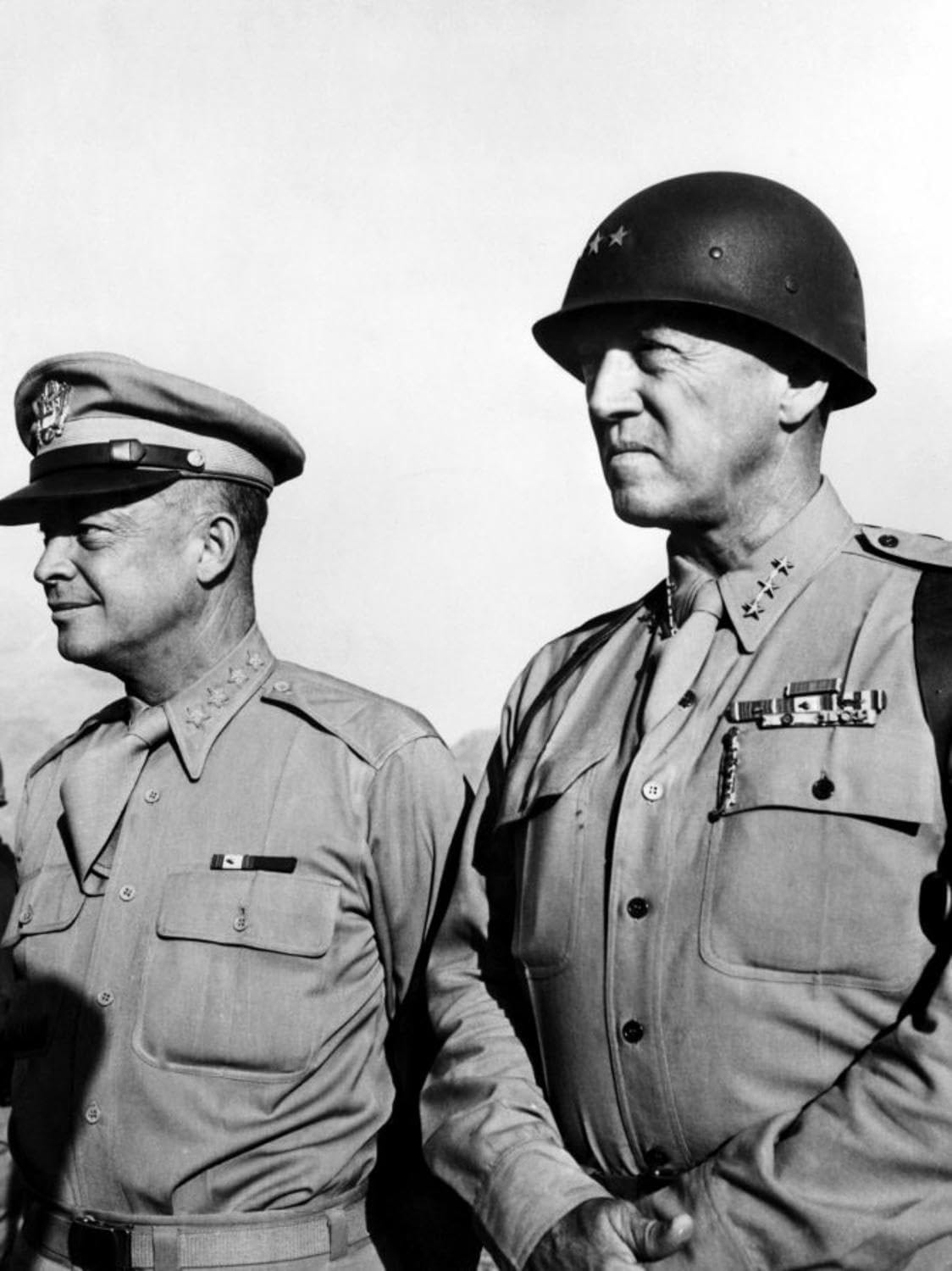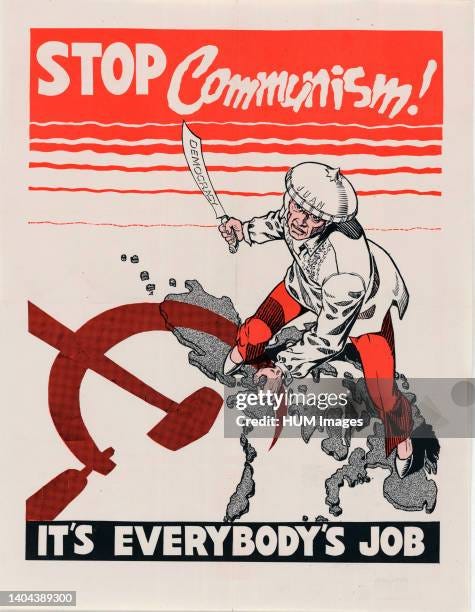Operation Gladio: NATO’s Covert War, Secret Armies, and Hidden Agendas
Discover the shocking truth behind Operation Gladio, NATO's secret stay-behind armies, and covert operations that continue to shape global conflicts and geopolitics.
Imagine a world where shadowy organizations pull the strings behind the scenes—where wars, assassinations, and political upheavals aren't just random events but orchestrated moves in a high-stakes game of control.
Sounds like the plot of a spy thriller.
But what if I told you it’s real?
Welcome to the world of Operation Gladio, a clandestine network of secret armies set up by NATO after World War II. Officially, it was designed to combat a potential Soviet invasion, but the reality?
Far murkier.
Instead of defending democracy, these stay-behind units became deeply involved in false flag attacks, political manipulation, and even terrorism—all under the guise of fighting communism.
Never heard of it? That’s not surprising.
For decades, Gladio remained one of the world’s best-kept secrets.
It wasn’t until the early 1990s, when the Italian government exposed its existence, that the world got a glimpse into just how deep this rabbit hole goes. From Italy to France, Germany to South America, the fingerprints of Gladio stretch across continents, influencing elections, destabilizing governments, and silencing those who dared to speak out.
So, what exactly was Operation Gladio?
Who were the key players?
And more importantly, is it still happening today under a different name?
Understanding Operation Gladio
To grasp the full scope of Operation Gladio, you have to think beyond traditional warfare. This wasn't about tanks rolling through city streets or uniformed soldiers marching into battle. This was a hidden war—one fought in the shadows, using deception, psychological manipulation, and covert violence.
At its core, Gladio was a network of stay-behind armies, secret military units embedded within NATO countries.
Their official purpose: To be ready to wage guerrilla warfare in case of a Soviet invasion.
But here’s the twist: the Soviets never invaded.
Yet these secret armies remained active for decades, influencing political events in ways most people could never imagine.
The Birth of a Secret Army
Gladio’s origins date back to the aftermath of World War II, when the West feared that Stalin’s Soviet Union would steamroll through Europe. To counter this threat, NATO, the CIA, and MI6 quietly set up underground paramilitary units in strategic locations across Western Europe.


These groups were stocked with weapons, explosives, and communication devices, hidden away in secret caches, ready to be activated at a moment’s notice.
But here’s where things take a dark turn. Instead of waiting for an invasion that never came, these units started meddling in domestic politics, carrying out false flag attacks, and fueling fear to justify authoritarian crackdowns.
Suddenly, their mission wasn’t about defense—it was about controlling narratives, suppressing dissent, and keeping power in the hands of a select few.
In essence, NATO, the CIA, and MI6 had created their own paramilitary unit, outside of any governmental oversight.
Who Was Really in Charge?
While NATO provided the structure, the real power behind Gladio rested in the hands of intelligence agencies like the CIA, MI6, and later, Mossad. These organizations, under the guise of fighting communism, used Gladio as a tool to eliminate political enemies, prop up puppet governments, and suppress leftist movements.
To do this, they recruited an unsettling mix of former Nazis, far-right extremists, and intelligence operatives, training them in sabotage, assassination, and psychological warfare.
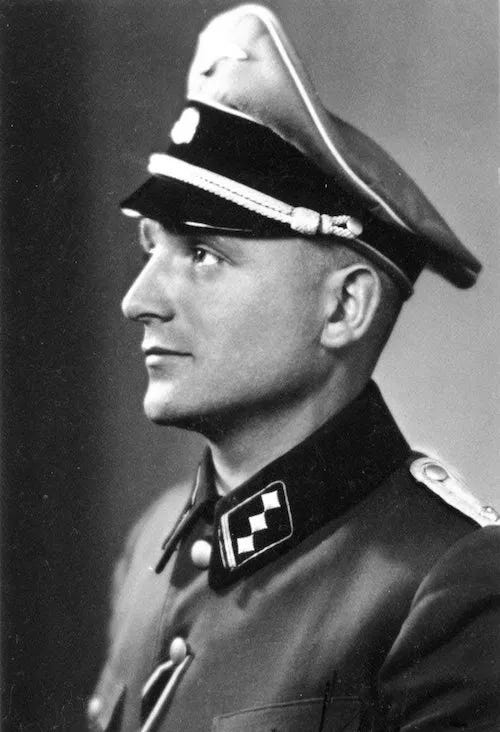
Think about that for a second.
The very people the Allies had fought against in WWII were suddenly on the payroll, working as the foot soldiers of an underground war.
Under Operation Paperclip, the U.S. brought in hundreds of Nazi scientists, intelligence officers, and military strategists, giving them jobs in defense, espionage, and even space programs. Many of these figures, particularly intelligence officers from the SS and Gestapo, were absorbed into Gladio networks, helping to build a covert army ready to wage a new kind of war.
One of the most notorious figures in this transition was Reinhard Gehlen, Hitler’s top intelligence officer on the Eastern Front.
Instead of facing justice, Gehlen was recruited by the CIA, put in charge of West German intelligence, and given control over Gladio’s stay-behind networks in Germany.
The Strategy of Tension
With “communism” gaining traction in places like Italy and France, NATO and the CIA realized that simply having secret armies in place wasn’t enough. If they wanted to control European politics, they needed something more effective—they needed fear.
I put communism in quotes because, as you research Operation Gladio, you find that “communism” is the dog whistle the CIA used to justify any action against people it didn’t like - whether the title was true to them or not.
One of Gladio’s defining tactics was the strategy of tension—a method designed to keep populations in a state of fear and instability. The idea was simple:
Carry out terrorist attacks.
Blame them on leftist groups
Use the ensuing panic to justify authoritarian measures.
This wasn’t just a theory. It happened.
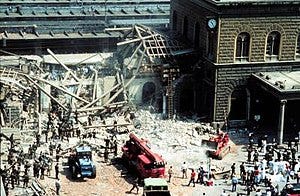
Bombings, assassinations, kidnappings—all falsely attributed to radical left-wing factions—were orchestrated to manipulate public perception and tilt elections. Here are some of their “greatest hits”:
The 1947 Sicilian Elections: The CIA funneled money and weapons into right-wing factions and the mafia to prevent a socialist victory.
The 1948 Italian Elections: Massive U.S. and British interference, using Gladio assets to intimidate leftist candidates, bribe officials, and spread anti-communist propaganda.
Piazza Fontana Bombing - Milan, Italy (1969)
A bomb exploded on December 12, 1969, at the Banca Nazionale dell'Agricoltura, killing 17 and injuring 88, initially blamed on anarchists but later tied to the neo-fascist group Ordine Nuovo with Operation Gladio links. Perpetrated by right-wing extremists, it was part of the "strategy of tension" to discredit the left, fostering political instability that favored right-wing governments.Peteano Bombing - Gorizia, Italy (1972)
On May 31, 1972, a car bomb killed three Carabinieri policemen near Peteano, initially attributed to the Red Brigades but later proven to be the work of neo-fascist Vincenzo Vinciguerra of Ordine Nuovo, using Gladio-supplied explosives. This attack heightened public fear and led to inquiries that exposed Gladio’s role, contributing to distrust in state institutions.Italicus Express Bombing - San Benedetto Val di Sambro, Italy (1974)
On August 4, 1974, a bomb on the Italicus train killed 12 and injured 48, initially attributed to left-wing extremists but later tied to neo-fascists with suspected Gladio connections. Carried out by right-wing terrorists, it intensified the "strategy of tension," maintaining pressure against Italy’s growing left-wing movements.Oktoberfest Bombing - Munich, West Germany (1980)
On September 26, 1980, a bomb at Munich’s Oktoberfest killed 13 and injured over 200, initially suspected to be leftist terrorism but later attributed to neo-fascist Gundolf Köhler, with allegations of Gladio involvement. Perpetrated by a right-wing extremist, it heightened anti-left sentiment in Germany, though investigations into intelligence ties remain inconclusive.Bologna Train Station Bombing - Bologna, Italy (1980)
On August 2, 1980, a bomb at Bologna Centrale station killed 85 and wounded over 200, initially pinned on the Red Brigades but later linked to the neo-fascist Nuclei Armati Rivoluzionari (NAR) with suspected Gladio involvement. Carried out by right-wing terrorists, it intensified Italy’s political turmoil, reinforcing the "strategy of tension" and exposing ties between extremists and intelligence services.
Gladio operatives were directly involved in acts of terror meant to create fear and push citizens into supporting more "security measures"—which often meant cracking down on civil liberties.
The Big Question: Did It Ever End?
In 1990, Italian Prime Minister Giulio Andreotti exposed the existence of Gladio, causing a political firestorm across Europe.


The official story is that it was shut down.
But let’s be real—do operations of this magnitude ever truly end?
Or do they simply morph into something new, under different names, with the same goals?
As you dig deeper, you’ll see how Gladio didn’t just disappear—it evolved, finding new battlegrounds in South America, the Middle East, and even modern-day Ukraine.
The tactics may have changed, but the objective remains the same: control, deception, and the shaping of global events from the shadows.
The Historical Context of Gladio
To understand how Operation Gladio became one of the most powerful and covert networks in modern history, you need to look at the chaotic aftermath of World War II. The world wasn’t just rebuilding—it was dividing. The United States and its Western allies were in an ideological battle with the Soviet Union, and the fear of global communist expansion fueled some of the most covert, unethical, and dangerous operations ever conceived.
Here’s where that narrative gets murky…
Crafting the “Big Red Scare”
Enter General George S. Patton, the brash, brilliant, and unapologetic American commander who’d just bulldozed his Third Army through Nazi Germany.
By May 1945, with Hitler’s regime in ashes, Patton wasn’t ready to hang up his spurs. He looked east and saw a Soviet Union gutted by war—millions dead, industry in ruins, and Stalin’s grip on Eastern Europe tightening like a noose. Patton didn’t mince words:
“If we have to fight them, now is the time,” he urged, pushing for an immediate invasion to crush communism while Russia was on its knees. In a letter to his wife on July 21, 1945, he lamented, “I could have taken [Berlin]… had I been allowed,” reflecting his belief that the Allies had squandered a golden opportunity by letting the Soviets seize the city.
He went further in private, telling his deputy, General Hobart Gay, “We promised the Europeans freedom. It would be worse than dishonorable not to see that they have it. This might mean war with the Russians, but what of it?”
Patton’s vision was audacious—rearm the defeated Wehrmacht, pivot the Allied war machine, and roll back Stalin’s empire before it could solidify.
But the top brass didn’t bite.
General Dwight D. Eisenhower, Patton’s superior, dismissed the idea outright.
“What in the world for?” Ike snapped when Patton pressed to march on Moscow.
The Yalta Conference had already carved up Europe, with Roosevelt and Churchill shaking hands with “Uncle Joe” Stalin, handing him Eastern Europe on a silver platter.
Patton saw it as a betrayal.
“Tin politicians in Washington have allowed us to kick the hell out of one bastard (Adolf Hitler) and at the same time forced us to help establish a second one (Stalin) as evil or more evil than the first.”
War-weary and wary of public backlash, the Allies opted for containment over confrontation, leaving Patton sidelined, relegated to a desk job in Bavaria by late 1945.
Then came the twist that still haunts history.
On December 9, 1945, just as Patton was set to return to the U.S.—where he’d vowed to “take the gag off” and expose the Allied missteps—his Cadillac collided with an Army truck in Mannheim, Germany.
A freak accident, they called it.
He broke his neck, lingered in a Heidelberg hospital, and died on December 21, 1945.
Suspicious? You bet.
No autopsy was performed.
The truck driver, a drunken sergeant, faced no charges.
Witnesses vanished, and official reports went missing.
Douglas Bazata, a former OSS operative, later claimed he’d been ordered by “Wild Bill” Donovan, head of the wartime OSS, to stage the crash, firing a metal shard into Patton’s head with a custom weapon.
Bazata alleged a Polish assassin finished the job with cyanide when Patton didn’t die fast enough, claiming it was “a certain refined form… that can appear to cause embolisms, heart failure.”
Was Patton silenced because he wouldn’t play ball?
Stalin feared him—once calling him unmatched among Red Army commanders in armored warfare. Washington feared him too—a loose cannon who threatened the fragile postwar order.
His death cleared the way for Gladio’s covert playbook to take root, unchallenged by a man who’d have rather burned Moscow to the ground than let it fester. Patton’s push to crush communism died with him, and the Cold War’s shadowy games—like Gladio—filled the void.
And so, with Patton out of the picture, the stage was perfectly set for crafting the “Big Red Scare”—a meticulously engineered panic that would justify Gladio’s existence and decades of shadowy meddling.
The Soviet threat didn’t just grow; it was cultivated. And, surprise, surprise - The Soviets never invaded.This “fictional” scene from the movie “The Good Shepherd” about the birth of the CIA, rings true of the reality of the cold war:
Gladio’s architects—NATO, the CIA, MI6—needed a boogeyman to legitimize their secret armies, false flags, and bombings blamed on leftists. Fear was the fuel: inflate the Red Menace, and the public would swallow anything—assassinations, coups, even propping up extremists—to keep it at bay.
The “Big Red Scare” wasn’t just a reaction—it was a masterpiece of manipulation, and Gladio was its opening act.
Key Players: The Puppet Masters of Gladio
Gladio wasn’t just some rogue CIA experiment. It was a multi-national operation, orchestrated at the highest levels of Western intelligence. These were the key players who made it happen:
The CIA: The primary funder and organizer, responsible for training and coordinating Gladio operatives. The agency provided money, weapons, and ideological direction, ensuring that Gladio forces remained aligned with American geopolitical interests.
MI6 (British Intelligence): Heavily involved in European operations, particularly in setting up secret training facilities and providing logistical support. The British played a crucial role in embedding Gladio networks throughout NATO countries.
NATO: The cover organization under which Gladio operated. While many NATO officials were unaware of Gladio’s darkest activities, the top brass knew exactly what was happening and facilitated key planning efforts.
European Governments: While most European leaders were kept in the dark, certain politicians—especially in Italy, France, and Germany—were complicit in maintaining and protecting Gladio networks within their own countries.
A Network That Never Died
Governments claimed that Gladio was dismantled, but history suggests otherwise. The same tactics—false flag attacks, coups, and intelligence-backed terrorism—continued well beyond Gladio’s supposed shutdown. Research suggests that Gladio never disappeared—it simply evolved into new forms of covert warfare.
Gladio’s Global Shadow
Operation Gladio wasn’t just a Cold War ghost haunting Europe—it was a playbook that NATO and the CIA exported worldwide, rigging conflicts from Latin America to the Middle East.
Its blueprint—covert paramilitaries, false flags, state-sponsored terror—fueled coups, armed extremists, and toppled governments, all masked as fights for democracy or “national security.”
Take Operation Condor: Gladio’s brutal cousin in Latin America.
In the ‘60s and ‘70s, the CIA teamed with dictators in Chile, Argentina, and beyond to crush leftists. Kidnappings, death squads trained by U.S. Special Forces, and bombings pinned on dissidents—like the 1973 Chilean coup that swapped Allende for Pinochet’s torture state—echoed Gladio’s dirty tricks.
Then there’s the Vatican twist.
Investigations—like Italy’s 1990 Gladio probe—exposed the Vatican Bank laundering CIA cash for right-wing militias, driven by an anti-communist crusade. “The Church saw socialism as Satan,” historian Daniele Ganser notes in NATO’s Secret Armies.
Add drugs to the mix: By the ‘80s, Gladio networks trafficked heroin and cocaine from Afghanistan to L.A., funding black ops while sparking the crack epidemic that gutted Black communities—a dual-purpose destabilization straight from the Iran-Contra playbook.
This wasn’t chaos—it was control.
Infiltrate, terrorize, fund it with narco-dollars or Vatican gold—Gladio’s model shaped regime changes in Libya and Syria, birthed PMCs like Blackwater, and kept the “strategy of tension” alive.
It didn’t die; it evolved.
What we call modern warfare is Gladio with better PR.
Final Thoughts
Operation Gladio may have started as a Cold War experiment, but it became the foundation of modern geopolitical control. Its legacy is everywhere—from false flag terror and color revolutions to intelligence-backed regime change and media propaganda.
Now that you know the patterns, the tactics, and the players behind the curtain, the question remains:
Will you recognize it when it happens again?
Is This Event Related to Operation Gladio? A Quick Checklist
Use this five-point checklist to determine whether an event follows the Gladio playbook. If you recognize multiple patterns, there’s a strong chance the event is not as organic as it appears.
1. The Event Sparks Fear and Division
☑ Does the event involve extreme violence (bombing, mass shooting, political assassination, etc.)?
☑ Is the public immediately divided into opposing sides, fueling political or social tensions?
2. The Media Pushes a Single Narrative
☑ Do major news outlets immediately frame the event in a way that benefits a specific political agenda?
☑ Are alternative explanations or discussions quickly dismissed, mocked, or censored?
3. The Government Gains More Power
☑ Does the event lead to new laws, expanded surveillance, or increased police/military presence?
☑ Is the response disproportionate, with crackdowns on rights, free speech, or opposition groups?
4. Key Details Are Suspicious or Contradictory
☑ Are there inconsistencies in the official story, with changing facts or missing evidence?
☑ Are key witnesses, suspects, or investigators silenced, ignored, or suddenly disappear?
5. It Fits a Pattern of Similar Events
☑ Has this type of event happened before under similar circumstances, leading to similar political outcomes?
☑ Does it benefit the same powerful institutions that profited from past crises?
How to Interpret Your Answers
1-2 Points: Possibly a real event, but stay critical of how it’s being used politically.
3-4 Points: Significant red flags—dig deeper and question who benefits.
5+ Points: Strong evidence that this event may follow the Gladio strategy of tension.
👉 Remember: When an event follows the same patterns as past false flags, it’s worth questioning if it’s truly what it seems. Stay skeptical, seek independent sources, and think critically.
Also, if you haven’t yet, be sure to check out AlphaWarrior’s and Colonel Towner’s Pilot Episode of “Operation Gladio” where they go into all this in detail:


